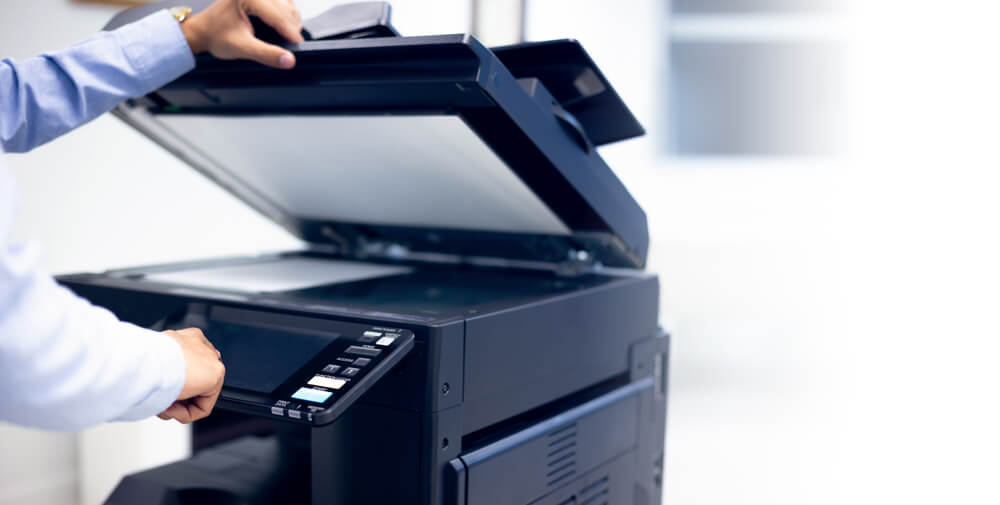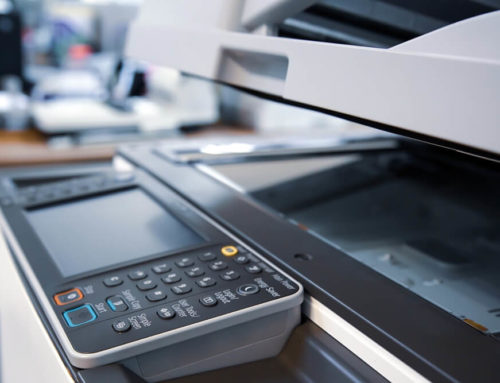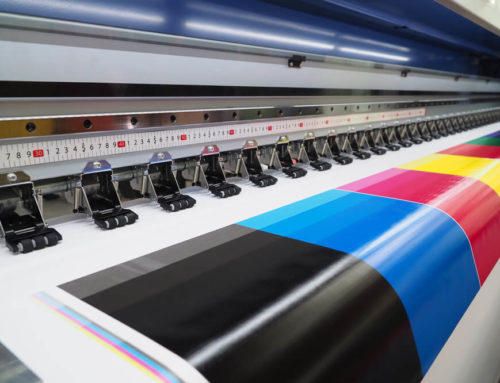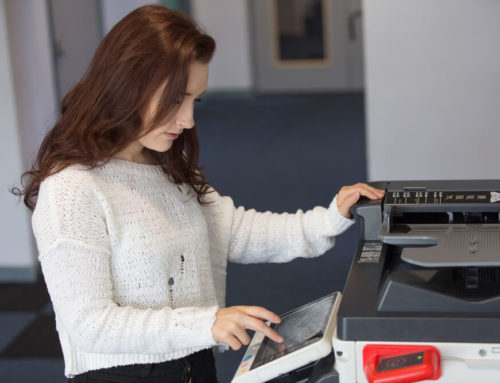Print management services streamline device management, printer output, costs, IT, and printing habits. For example, an office copier lease is one way of solving your organization’s print needs. Yet, leasing a copier is not the only method of achieving these goals, and you should be aware of others.
Optimizing the print network used by the company can pose a challenge for IT resources. Tracking the use of print resources can minimize disruptions to operations. If you run out of paper, ink, or toner, you can’t continue printing without a refill.
What Is Print Management, and How Can It Help Your Business?
Print management services help reduce wasted resources, secure documentation, and improve printing. It’s useful in corporate and educational settings or anywhere you use multiple printers.
Any office or school must print documents to operate, or they will fall behind on key tasks. Fortunately, a team can help integrate software into the network to track devices. By monitoring printers in real-time, you’ll see if they need refills, enhancing output.
Also, you must watch out for documents with sensitive info and make sure they’re not left out for prying eyes.[1] A key benefit of printer monitoring is that you see which are most active, making it easy to prioritize them.
Leaving your printers and print systems unmanaged can often lead to out-of-control costs. Since ink, electricity, paper, and toner all cost a lot, device usage is crucial to cost reductions. Usually, printer use is more excessive if done in an unmanaged environment, adding to business costs. Tracking them is impossible when printers aren’t connected to a central monitoring station. This causes overuse of print resources, wasting of paper, and irresponsible use of ink.
If your print network isn’t centrally managed, you can spend much more, and you could put data at risk. As a result, client information may fall into the wrong hands, and you would be on the hook for any damages.
What Do Print Management Services Include?
Solutions for your printing needs exist, but you must consider which to use first. Connecting printers to a centralized network will make monitoring them simple. Plus, an IT team can use an authentication system to prevent unauthorized users from using them.
Most professionals recommend using customizable commercial print services as it will offer better results. When working with a pro, they will take into consideration the network requirements. They can design a solution targeting network topology, cloud strategy, and mobile integration.
Then, let the designers know about your company’s information security policies. They’ll incorporate this while creating a custom solution for your printing needs. Some companies try to give you a one-size-fits-all solution, and this rarely works. Partner with one that considers organizational policies and cost management.
Most of the time, a simple software solution isn’t enough to meet the needs of a growing company, but not always. A solutions architect can consult with your customers, and then they will use that info. This may include authentication options, letting you see any change to backend systems.
Furthermore, a qualified architect will look at the make and model of printers on a network. By seeing which are part of your infrastructure, they can design a tailored approach. This approach will conform to your corporation’s internal policies set in place.
Documentation confidentiality is a topic of concern for most organizations. It’s always a part of a well-made solution, so nothing can compromise client intel or info. As such, you should look for a solutions manager that’s willing to work in the company’s framework.
Why Should You Consider Enterprise Print Management Services?

If your company has deployed a mixed fleet of print devices, you need a management solution to track them. This includes a mix of leased and owned devices at companies, making them difficult to follow. Since the IT team has integrated owned printers, leased ones won’t connect right away.
Considering its benefits, a managed commercial print services contract can be an effective solution. Usually, you must sign one with an equipment manufacturer or reseller, and they will handle it.
An MPS contract may encompass supply management protocols as well as device services. On the contrary, most MPS contracts do not include repairs, so keep that in mind. These mainly consider the implementation of end-user devices and tracking activity. By collecting this data during daily operations, optimizing device use is easier. As a result, expect to see reductions in waste, improving efficiency and profit.
When managing a university print lab, tracking printer use at the facility is crucial. Otherwise, you may use more resources than you can replenish, leading to added costs. Many schools must track how many resources students are using. Printing volume tends to stay consistent on-campus, so it’s easy to project.
Deploying an integrated print management solution in a school setting can enhance performance. This would be an effect seen across campus, and it improves the student experience. Since they can use one authentication system at any printer in the network, using them is much easier.
Moreover, it lessens the difficulty facing IT specialists when working on networks. Thus, they can provide a streamlined service, and it’s not hard to expand capacity when needed.
Printers, scanners, and other print resources pose a potential security risk for companies. Since the complexity of a network scales in tandem with its risk, you must track it. If not, your client’s information could end up in someone else’s hands, and no manager wants that. As such, a customized solution will consider this pitfall, innovating around them.
Output devices, such as printers, copiers, and MFDs, are one area of concern to monitor. Most modern networks develop protocols to contain them, lessening threat severity. By disabling unnecessary ports, there are fewer points of access for hackers. Plus, they can help you maintain up-to-date software and automate firmware changes. On top of software updates, these solutions can implement authentication requirements, boosting security.
What Are the Benefits of Cloud Print Management?
Cloud printing has been a growing area of interest for IT managers on account of its many benefits. It increases accessibility for end-users and lowers the cost burden of hardware. Both of these have given rise to the cloud architecture we see today, and you will see the change in real time.
Many providers offer software as a service solution, and the improvements are apparent. This has made companies migrate away from internal systems as a way to reduce long-term costs. At the same time, it’s given rise to enhanced scalability since you no longer have to buy as much hardware.
Expanding isn’t as hard once they’re part of your organizational approach. If your company is looking to reduce its IT footprint, cloud solutions may be helpful. Using a cloud-based solution reduces the demands placed on the company. In addition, you won’t need to license, deploy, or manage printers as often.
To summarize, managing a printing operation involves several factors that affect complexity. Relying on the expertise of a company based in this vertical can lessen your cost basis, and it may boost profit. IT admins are well aware of these benefits, and that’s why they implement cloud solutions so much.
Servers were often a part of company budgets in the past, and this led to a lot of wasted capital. Today, you may avoid this drain on resources by skipping them altogether in favor of the cloud. Simply making this switch frees up cash, which is a huge boon. Plus, you don’t need to worry about a loss of functionality as the cloud still meets your needs.
Another factor that’s made the cloud attractive is the reliability of its pricing. When running server racks, electricity alone will vary in price along with the market. The cloud will benefit you since it has a reliable pricing model that doesn’t change each month.
You should expect the following from a well-managed print solution:
- Enhanced work output
- Fewer disruptions to workflow
- Decreased operational costs
- Enhanced documentation security
Security Protocols for Cloud-based Workflows
IT managers often balk at the thought of integrating printers into a network. Add in the fact that you’re managing them online, and it quickly becomes a topic of contention. The print-as-a-service model may draw some fire, but it’s a proven method of business. Moving the printers online can reduce the complexity of network management, cutting costs. Plus, it can eliminate the need for internal servers, further reducing long-term costs.
Administering the cloud-based print network is something that you can do from a browser. As a result, anyone with computer experience is up to the task. Data transmission uses the internet printing protocol, and it occurs over secure ports. This makes it relatively easy to manage network security, and that benefits everyone.
Documents, images, and spreadsheets transmit through the cloud-based network, and they remain secure. Encryption protocols used by the cloud architecture are responsible for this. Then, a user must travel to the end device before authenticating their presence. They may use a proximity card, login credentials, or a phone to authenticate at this point.
Barring unauthorized users from printers can reduce wasted resources, cutting ongoing costs. Unless a user authenticates successfully, they won’t gain access to the printers. However, once a user has verified their identity, they can access the print queue. Then, they may decide whether they’d like to print what’s in it or not.
After accessing the print queue, they can choose to print all the listed documents or do them one at a time. Selecting a document from the queue will pull it from the cloud, letting them print it at the chosen device. The design of this workflow ensures confidentiality and prevents unauthorized document access.
Is It Better to Lease or Buy an Office Copier for Your Company?

A lot goes into running a small business, and you need the right hardware for the job. Sometimes, that means leasing equipment, especially if there’s no long-term office space. Purchasing a printer could provide a better return if planning on leasing space for a long time.
Consider what you would use the device to accomplish before any decisions. For example, you may want to use it to manage your copying, scanning, printing, faxing, and more. To that end, we’d suggest a multi-function device built to fulfill all these needs. The right device makes it easy to manage the workflow at your organization and boosts profit.
Consider the up-front and ongoing costs of any devices you’d like to purchase. If you need to print a ton of copies each month, look for one with sufficient workload capacity. Otherwise, you may waste a lot of money on something that cannot fulfill your needs.
Besides the costs, you must also keep in mind what you would use the device for and whether one meets your needs. For example, if you would like to use a printer to send faxes, but it can’t, it wouldn’t be a good choice. Another factor to consider is its output capacity, rated in pages per minute. Unless the machine can meet your demands, it won’t do a good enough job for the company.
If buying or leasing a copier, most measure its performance using a similar rating. The images per minute metric tells you how many copies the machine can scan in a single minute. So, if you need to scan mountains of paperwork, this is an essential concept to consider.
Which Printers Are the Best for Your Business?
It can be difficult to know which is best for your company with so many devices to consider. We’ve ranked three of the top choices so that picking one is a little easier. Before entering consideration, all three had to win the BLI Buyer’s Lab 2020 Pick award. This is the leading provider of independent testing services in the documentation industry.
- Kyocera TASKalfa 7003i
- Multi-function printer
- Black and white capabilities
- 1200 x 1200 DPI
- Max of 7,650 sheets
- Sharp MX-3071
- Advanced series color MFP
- 30 ppm B&W
- Intuitive touchscreen controls
- Max of 6,300 sheets
- Sharp MX-M3071
- Networked B&W MFP
- Standard wireless connectivity
- Max of 6,300 Sheets
- 30 ppm B&W
Now, we’d like to hear from you if you’re interested in expanding your company’s print capacity. What did you enjoy the most about this content, and how could we improve future posts? Contact us and schedule a free consultation with a solution specialist today.





